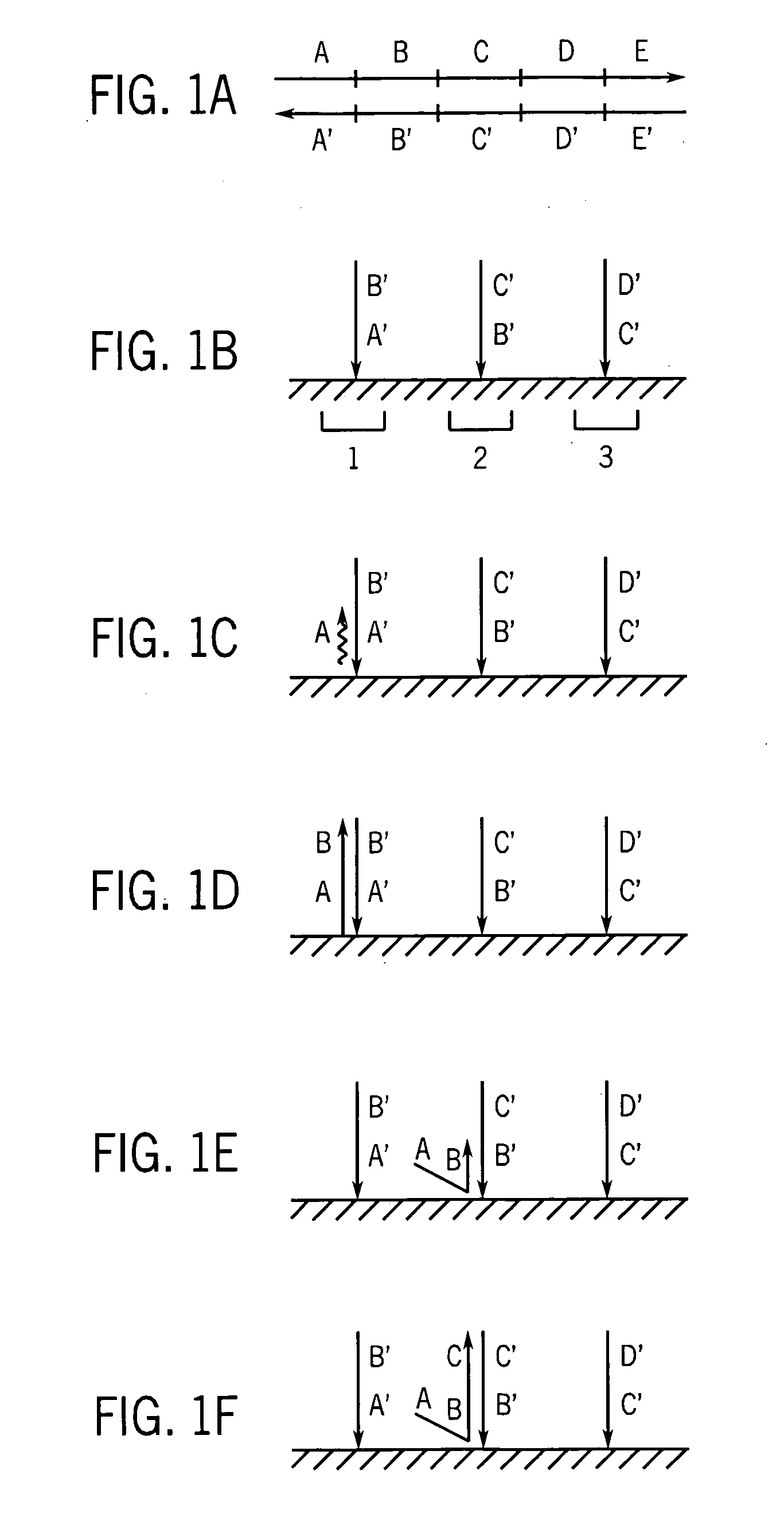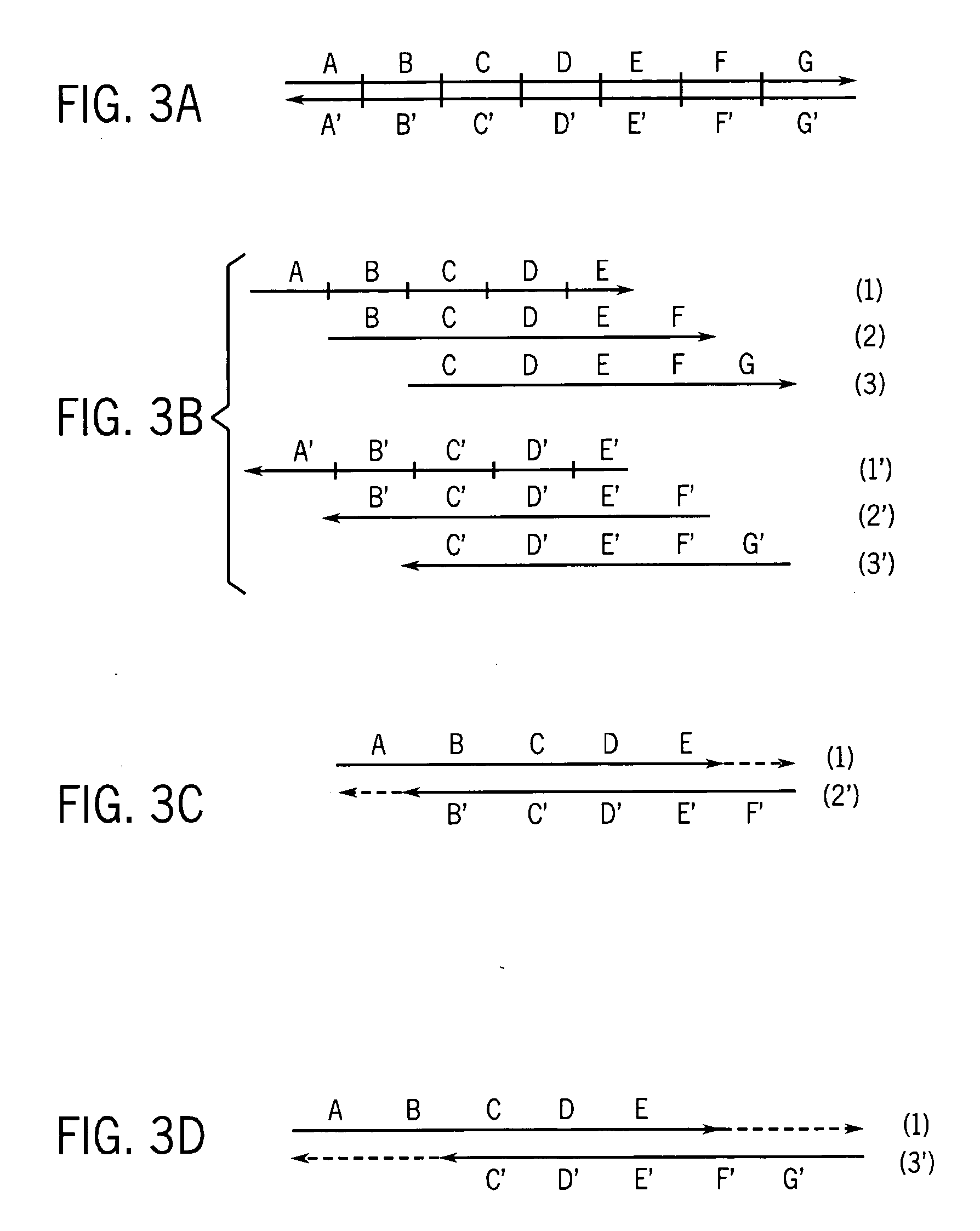Methods for high fidelity production of long nucleic acid molecules
- Summary
- Abstract
- Description
- Claims
- Application Information
AI Technical Summary
Benefits of technology
Problems solved by technology
Method used
Image
Examples
Embodiment Construction
[0061] Part I. Production of very long strands of nucleic acids.
[0062] Many protocols exist for assembling oligonucleotides into larger molecules of nucleic acid. These include ligase-based and polymerase-based methods. Some of these methods combine all the necessary oligonucleotides into a single pool for assembly (sometimes referred to as “shotgun” assembly) while others assemble subsets of the oligonucleotides into larger sequences, and then combine these sequences to yield the final full length product. Additionally, the fidelity of the initial library of short oligonucleotides often limits the fidelity of the full-length product. However, the production and manipulation of oligonucleotides needed to produce molecules containing more than a few thousand bases proves an arduous effort. This disclosure details methods for employing large numbers of oligonucleotides to efficiently generate molecules of nucleic acid on this length scale, and much greater length scales as well. Thes...
PUM
| Property | Measurement | Unit |
|---|---|---|
| Length | aaaaa | aaaaa |
| Fluorescence | aaaaa | aaaaa |
| Error | aaaaa | aaaaa |
Abstract
Description
Claims
Application Information
 Login to View More
Login to View More - R&D
- Intellectual Property
- Life Sciences
- Materials
- Tech Scout
- Unparalleled Data Quality
- Higher Quality Content
- 60% Fewer Hallucinations
Browse by: Latest US Patents, China's latest patents, Technical Efficacy Thesaurus, Application Domain, Technology Topic, Popular Technical Reports.
© 2025 PatSnap. All rights reserved.Legal|Privacy policy|Modern Slavery Act Transparency Statement|Sitemap|About US| Contact US: help@patsnap.com



